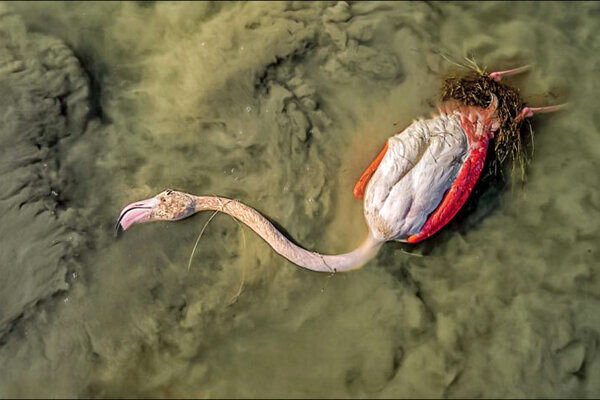Botulism kills 10,000 birds in Miankaleh peninsula, Gorgan Bay

TEHRAN – Some 10,000 bodies of lifeless migratory birds died as a result of botulism poisoning have been found so far around the Miankaleh peninsula and Gorgan Bay, located in the extreme south-eastern part of the Caspian Sea.
Botulism disease, which for the second consecutive year has caused the death of a large number of migratory birds in Miankaleh and Gorgan Bay, has reached Ashuradeh Island, IRNA reported on Tuesday.
Botulism is caused by a toxin produced by the bacterium Clostridium botulinum, and the birds become infected by the ingestion of plants or animals infected with the toxin and lose their lives.
Clostridium botulism is an anaerobic bacterium that grows in decaying plants and animal material and often occurs in lakes during periods of lack of oxygen and poor water quality.
The carcasses were mostly from bird species of flamingo, coot, duck, and pelican, which have been discovered around the shores of the Bandar Torkaman city, Ali Bayani, head of the provincial department of environment said.
In January 2020, media reported the mysterious death of over 40,000 migratory birds in the Miankaleh peninsula; a week later, the veterinary organization announced that "botulinum poisoning" was the reason behind mass bird mortality.
Management ‘out of control’
Excessive hunting in migratory birds’ habitats in the country has made the Convention on Migratory Species warn some countries about this issue, which has always been a global threat to biodiversity and has attracted international attention.
Now, along with illegal hunting, there are other environmental threats, including water pollution and wastewater flow, lack of provision of wetlands’ water right, cause the management of migratory birds’ habitats to get out of control.
A treasure under threat
The long and narrow peninsula is 48 kilometers long, and between 1.3 and 3.2 kilometers wide, which sets apart the Gorgan Bay from the Caspian Sea. Four villages namely Ashuradeh, Qezel-e Shomali, Qezel-Mehdi, and Qavasatl are situated on the peninsula.
Miankaleh was designated a Ramsar site in 1975. Major habitats include wetlands, inter-tidal mud with sandy shores, shallow marine waters, forests, peatlands, and agricultural areas.
It is home to many unique Caspian birds and reptile species native to this region. It's also a very important internationally-recognized refuge for migratory birds.
The peninsula water deficits, additionally mismanagement, unsustainable agricultural practices, and severe depletion of the wells and groundwater resources have exacerbated the Miankaleh peninsula’s condition.
Local people earn their income from agriculture, horticulture, animal husbandry, handicrafts, carpet weaving, traditional poultry farming, and tourism.
Overgrazing, illegal hunting, fishing, deforestation, and the unplanned spread of villages are some of the challenges posing threat to the region’s environment.
FB/MG

Leave a Comment